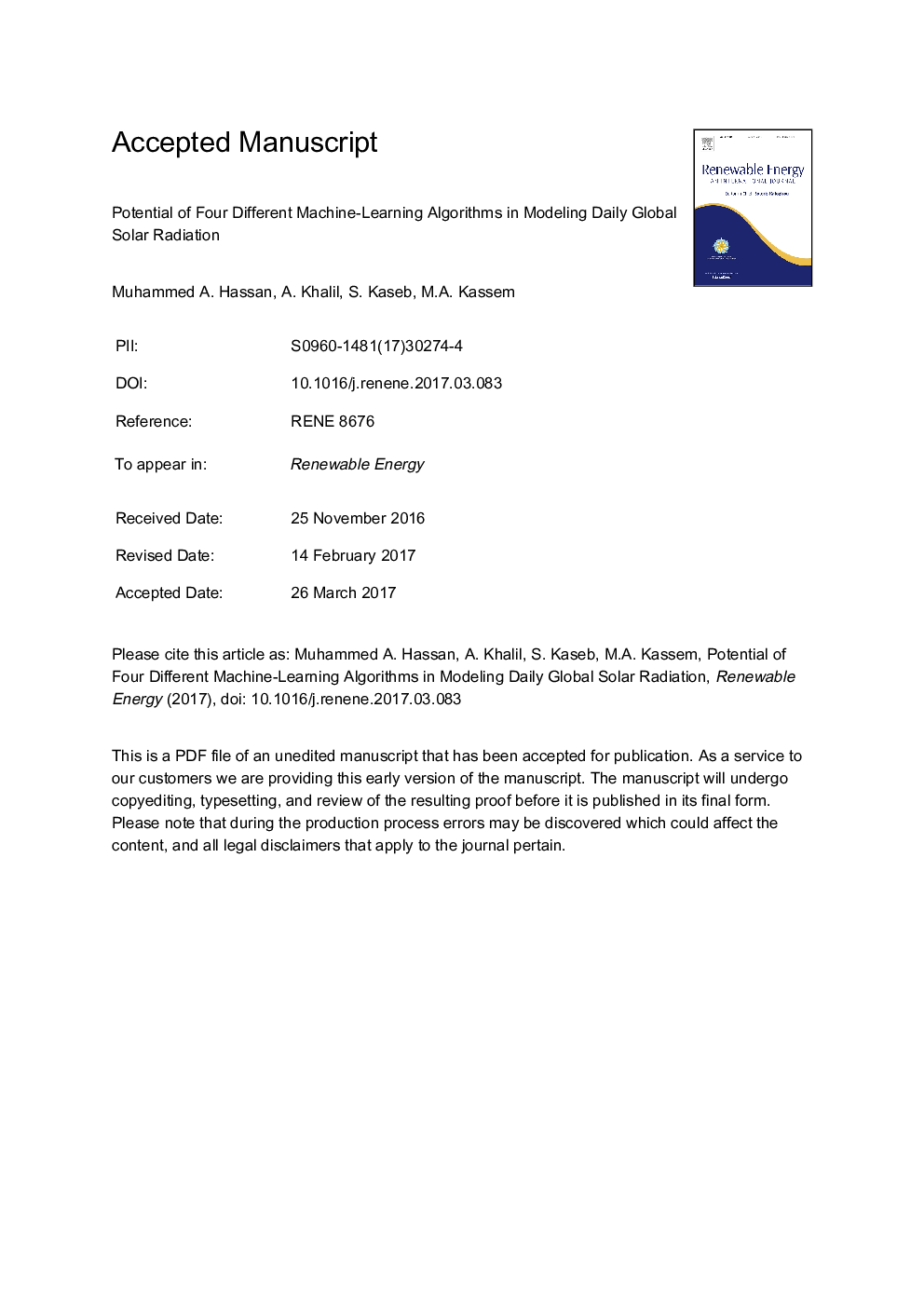| Article ID | Journal | Published Year | Pages | File Type |
|---|---|---|---|---|
| 4926284 | Renewable Energy | 2017 | 29 Pages |
Abstract
In this study, the potential of different machine-learning algorithms in modeling global horizontal solar irradiation is examined. Multi-layer perceptron (MLP), adaptive neuro-fuzzy inference system (ANFIS) and Support Vector Machines (SVM) algorithms are adopted, beside a newly suggested algorithm: decision trees. All models are grouped in four categories: sunshine-, temperature-, meteorological parameters- and day number-based models. All models have been trained, optimized, validated and compared with each other and with old and newly suggested regression models, using high-resolution, highly accurate measured data recorded over Cairo, Egypt, throughout five years, as a case study. Models with best statistical measures of accuracy and best generalization abilities have been recommended after being tested using an independent dataset. The results show that MLP models excel in estimating global irradiation with root mean square error lower than that of best corresponding regression models by 4.75-31.69%, depending on the model category. Followed by ANFIS models (if carefully validated) and SVM models. In addition, the study assesses the ability of decision trees in modeling solar radiation. Despite of their simplicity, the merits of temperature- and day number-based models are demonstrated, with coefficients of determination greater than 85%, to be used in case of unavailability of sunshine records.
Keywords
Related Topics
Physical Sciences and Engineering
Energy
Renewable Energy, Sustainability and the Environment
Authors
Muhammed A. Hassan, A. Khalil, S. Kaseb, M.A. Kassem,
